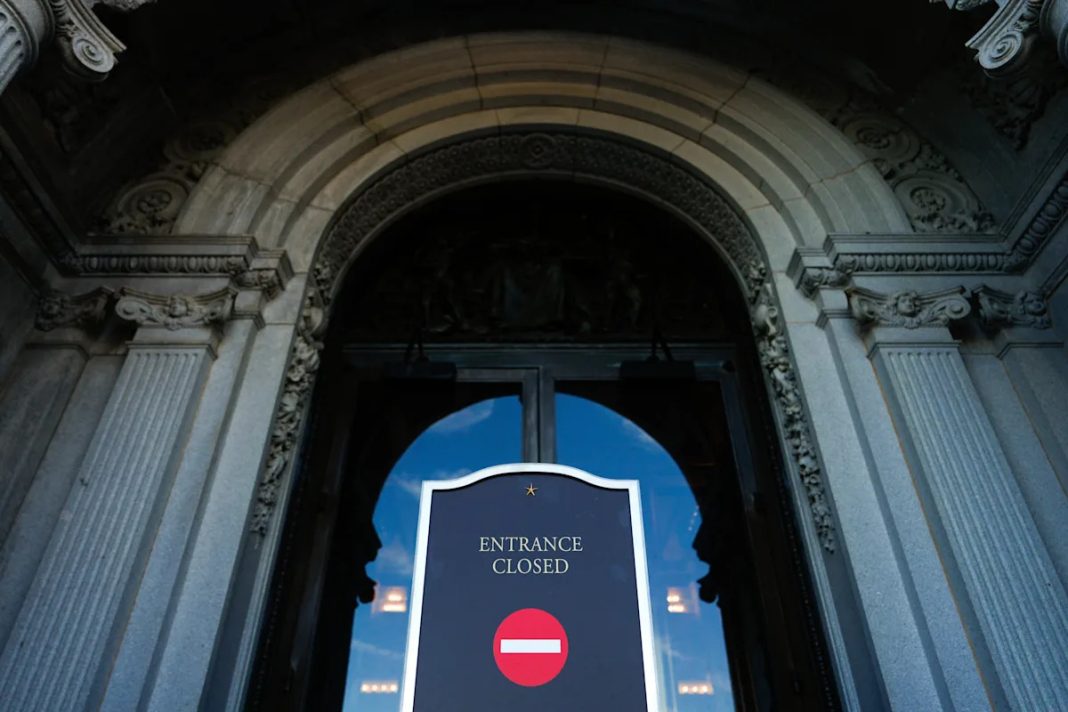WASHINGTON (AP) — President Donald Trump got a significant amount of blame during the last partial government shutdown, which took place toward the end of his first term after he forced a shutdown over border wall funding — but with Democrats embracing the shutdown fight this time, the outcome could be very different.
A New York Times/Siena poll conducted last week, prior to the shutdown, shows that most registered voters did not want Democrats to shut down the government if their demands were not met, although both parties could end up receiving some blame for the resulting closure.
Here is what AP-NORC polling showed about the 2019 shutdown, and what recent polling suggests about how voters could react as the current shutdown unfolds.
Many blamed Trump for the last partial government shutdown
The last government shutdown took place in late 2018 and early 2019, after Trump demanded money for a U.S.-Mexico border wall. Then-House Speaker Nancy Pelosi, a Democrat, refused to negotiate unless Trump allowed the government to reopen.
In an AP-NORC poll conducted during that shutdown, about 7 in 10 Americans said Donald Trump had “a great deal” or “quite a bit” of responsibility for the partial shutdown. About 6 in 10 said that about Republicans in Congress, and roughly half said that about Democrats in Congress.
It was seen as a significant problem at the time, as airport delays and missed paychecks for federal workers brought urgency to efforts to resolve the standoff. About two-thirds of U.S. adults said the partial government shutdown was “a major problem for the country.” Democrats were more likely than Republicans to see it as a large issue.
Most didn’t want Democrats to force a shutdown this time
In the Times/Siena poll, about two-thirds of registered voters said the Democrats should not shut down the government, even if their demands were not met.
Democrats in Congress had demanded an extension to expiring health care benefits in order to pass the bill to extend government funding. Republicans in Congress had refused, but offered a stopgap bill to keep the government open for several weeks, which Democrats rejected.
Registered Democrats may have been more eager than voters overall to see their party’s leadership force a shutdown: 47% said the Democrats should refuse to fund the government if their demands were not met. The move was less popular among independents and Republicans. About 9 in 10 Republicans and roughly 6 in 10 independents said Democrats should not shut down the government, even if their demands were not met.
But depending on what happens next, there could be plenty of blame to go around.
About one-quarter of registered voters in the Times/Siena poll — which was conducted prior to the shutdown — said they would blame Trump and the Republicans in Congress if a shutdown happened, while about 2 in 10 said they would place blame on congressional Democrats. About one-third said they’d blame both sides equally.
What Americans think of Congress
Congress had few fans with the American public, even before the shutdown.
It’s hard to find an American who has “a great deal” of confidence in the way Congress is being run, according to AP-NORC polling. Only 6% said they had a high level of confidence in the people running Congress in polling from this summer. About half had “only some” and 44% had hardly any confidence in how Congress was being run.
Confidence tends to be low among Democrats and Republicans, regardless of which party is in power. About 1 in 10 Republicans had “a great deal” of confidence in Congress, compared to 2% of Democrats.
___

